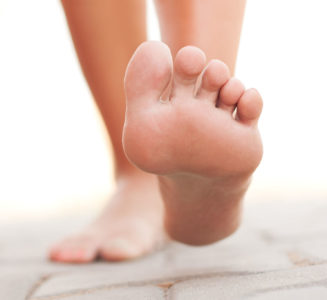 You’ve probably heard of the phrase, “No Pain, No Gain,” but just how true is that statement? General soreness and some pain is actually a good thing, because it is a sign that your muscles are being tested and you’re getting stronger. Same goes for the muscles in your feet. But when does a good, sore pain transition into bad pain that suggests you should seek treatment? We explain the difference between good foot pain and bad foot pain in this blog.
You’ve probably heard of the phrase, “No Pain, No Gain,” but just how true is that statement? General soreness and some pain is actually a good thing, because it is a sign that your muscles are being tested and you’re getting stronger. Same goes for the muscles in your feet. But when does a good, sore pain transition into bad pain that suggests you should seek treatment? We explain the difference between good foot pain and bad foot pain in this blog.
Three Rules About Pain
If you’re training for a marathon or working to get better at a certain sport, odds are your feet and ankles are going to have some soreness and pain after a long workout. However, you want to keep these three rules in mind when it comes to foot pain:
1. Pain is Low – The pain and soreness you feel in your legs may be annoying, but in the grand scheme of things, it should be very low on the pain scale. If 0 represents no pain at all, and 10 represents the most extreme pain, your foot pain should be between a 1-3 to be considered normal. If pain is more intense, stop activity and give your feet a break.
2. Sharp Pain or Alters Gait – Similar to the above point, if pain is ever shooting or sharp, it’s a sign that you’re suffering from an injury and not just general soreness. Oftentimes this shooting pain causes you to alter your gait, so if the pain is causing you to walk with a limp or hobble through your workout, know that this isn’t normal and that you should seek out a professional opinion.
3. Don’t Mask Pain – Finally, while anti-inflammatory medications or over-the-counter pain relievers can help us deal with general soreness, don’t take medications to mask pain. We understand that you want to stay ahead of your discomfort, but at the same time, if all you’re dealing with is good soreness, then there should be no issue waiting until your workout is complete. Taking drugs to mask pain before working out can leave you susceptible to injury or dependence, so wait until your workout is over to see if you’d benefit from an OTC option.
If you keep those three rules in mind, we’re confident that you’ll be able to tell the difference between good foot pain and bad foot pain.